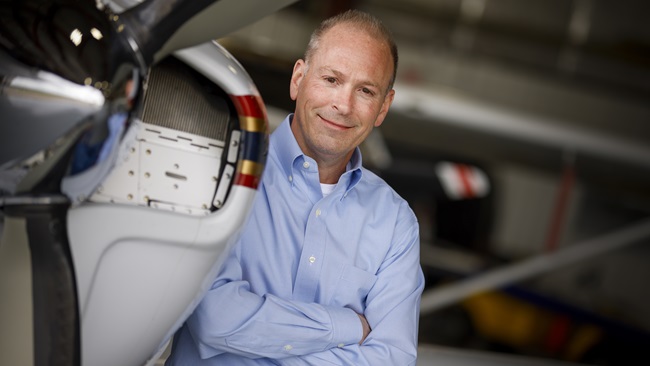You Can Fly: High school aviation STEM Symposium goes virtual
Aviation teachers, industry leaders share energy, compare notes during interactive presentation
The sharing of ideas, information, and teaching tips flew by at a frantic pace during the 1.5-hour presentation. The appetite for aviation learning and accompanying careers has grown exponentially in the years since the AOPA You Can Fly High School Initiative began, despite a recent commercial air travel slowdown brought on by the coronavirus pandemic.
The yearly gathering of science, technology, engineering, and math teaching specialists helps highlight an engaging curriculum for young people that spans ninth through twelfth grade with hands-on projects that make learning fun and interesting.
“It’s feeling really good here,” said AOPA High School Aviation Initiative Director Glenn Ponas moments before the presentation began. More than 950 people attended the virtual event, which included sessions presented by aviation STEM education leaders and professional pilots. Several schools held virtual watch parties with teachers, students, administrators, and parents sharing the experience. The focus was on tools and strategies to help teachers and administrators implement and grow an effective aviation STEM program.
The AOPA curriculum is available free of charge to school systems nationwide and has been implemented in more than 400 classrooms at more than 200 schools in 38 states, shaping the lessons taught to about 8,000 students. One of the hallmarks of the initiative is broadening the demographics of those exposed to aviation to help diversify the pilot population. For example, nearly 23 percent of the high school aviation STEM students are female, compared to about 7.5 percent of females working as career pilots in the United States.
Interactive chats began the moment the program went live and continued throughout the presentation hosted by Swayne Martin, a professional pilot with a massive internet following.
AOPA President Mark Baker welcomed hundreds of online participants and said he is remaining focused on preparing young people for aviation careers despite temporary setbacks that might not always allow a “straight line” to a full-time job. Baker encouraged instructors and their students to stay the course and predicted aviation careers would remain strong in the months and years ahead.
Aviation proponent and teacher Carla Ladner experienced a scholarship opportunity firsthand. In 2019 the Lufkin, Texas, educator was awarded an AOPA flight training scholarship to finish her private pilot certificate. She previously told AOPA that she “never knew how much fun aviation could be,” and praised the high school curriculum as a “very successful teaching tool” during the symposium chat session. The algebra teacher pointed out that her school will soon have “15 students taking their FAA Part 107 [remote pilot certificate] test.”
Flight test engineer and presenter Chris Liebman encouraged participants to seek out a professional with similar interests who can act as a coach and as a guide. “Find people who are doing what you’re doing and talk to them. Find out what their path was,” and follow their footsteps, he suggested. “One of the best things you can do is to find a mentor.”
Women in Aviation International CEO Allison McKay, UPS Vice President of Flight Operations and Safety Capt. Houston Mills, and Organization of Black Aerospace Professionals Board Chair Vanessa Blacknall-Jamison led a diversity discussion on inclusivity and broadening the pilot ranks. Blacknall-Jamison reminded participants that they should look inside themselves for inspiration, perseverance, and self-assurance. “Mentorship is vital, but you have to believe in yourself [and] have faith. Believe in yourself and you are capable of doing anything. The sky is the limit.”
The next AOPA High School Aviation STEM Symposium is planned for November 14 through 16, 2021, in Orlando, Florida.



